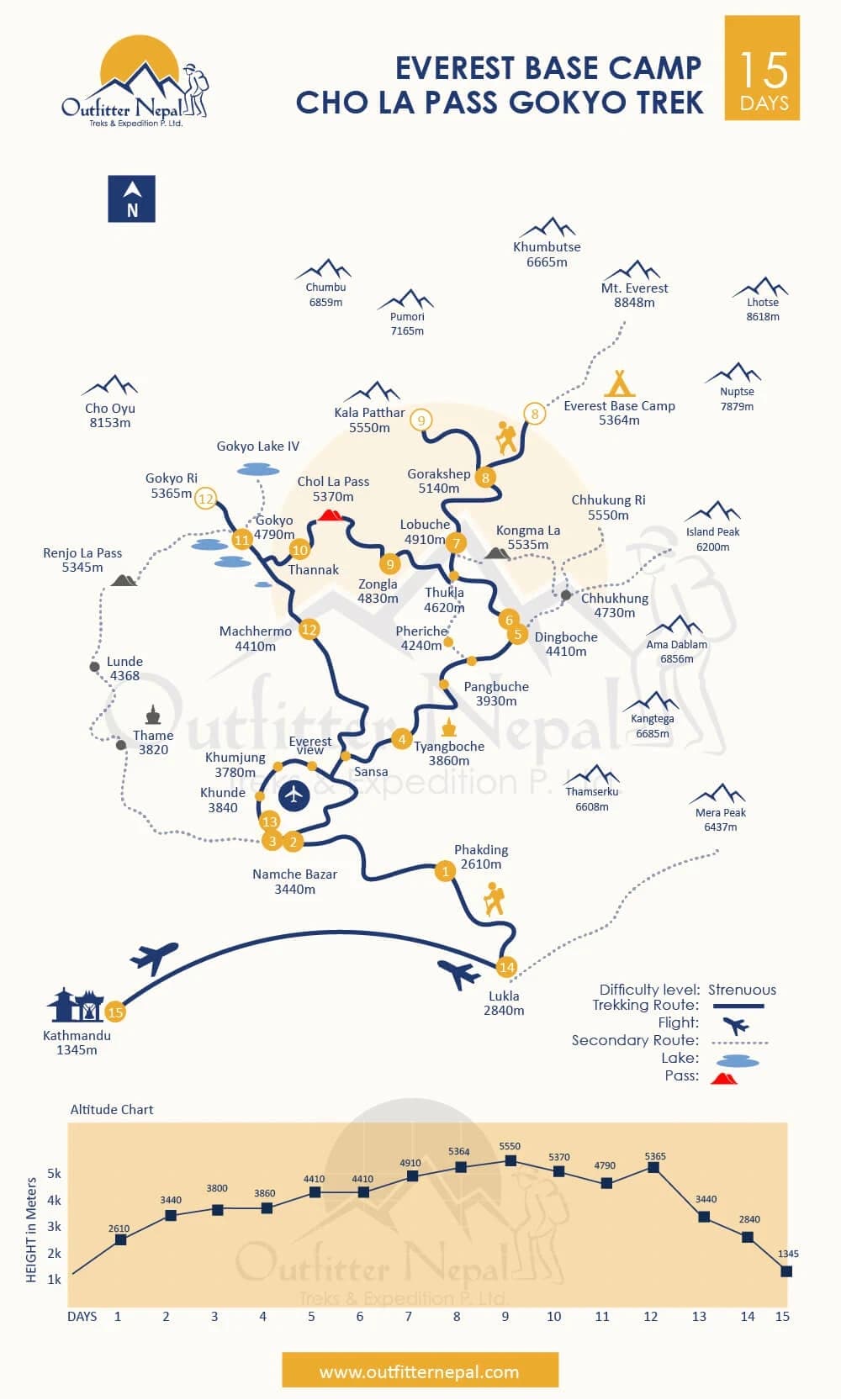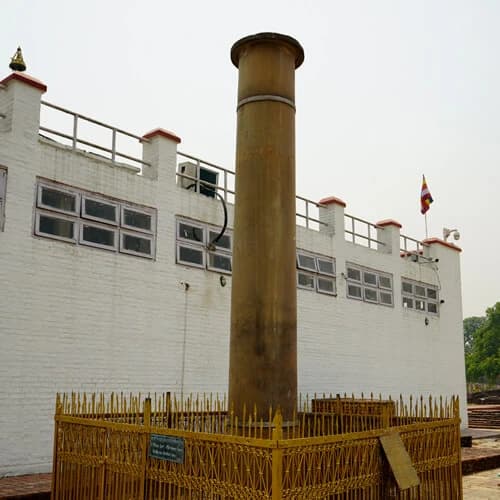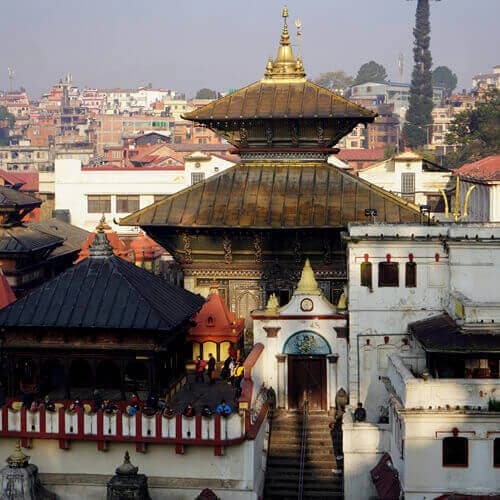Highlights of EBC Chola Pass Gokyo Trek 15 Days
- Soar above the Himalayas with a scenic flight to Lukla, and witness breathtaking views of green hills, lush meadows, and charming villages.
- Stand in awe and admire the view of Mt. Everest, the world's highest peaks, and other peaks, including Mt. Lhotse, Cho Oyu, and Mt. Makalu, from iconic viewpoints like Kala Patthar and Gokyo Ri.
- Experience the vibrant local Sherpa culture by exploring ancient monasteries, including Tengboche Monastery, and walking past colorful Mani walls, prayer wheels, and high suspension bridges.
- Trek through the stunning Gokyo Valley, discovering pristine glacial lakes and the immense Ngozumpa Glacier, one of the world's longest.
- Conquer the challenging Cho La Pass, reaching the top at 5,420 meters for close-up, dramatic views of Cholatse (6,440 m/21,130 ft) and Nirekha peaks (6,069 m/19,911 ft).
- Encounter diverse flora and fauna with a chance to spot wild animals and birds in Sagarmatha National Park.
- Reach the ultimate destination of Everest Base Camp, where you can witness the imposing Khumbu Icefall (5,486 m/18,000 ft) and glaciers.
- Enjoy a spectacular sunrise and sunset from the Gokyo Ri viewpoint, casting a vibrant light across the Himalayas.
Overview of the Everest Base Camp Chola Pass Gokyo Trek
The Everest Base Camp Chola Pass Gokyo Trek is a spectacular and challenging high-altitude journey in the Khumbu/Everest region of Nepal. The 15-day itinerary combines the Classic Everest Base Camp (5,364 m/17,598 ft) with an exploration of the pristine Gokyo Lakes (4,700 to 5,000 m/15,420 to 16,404 ft) and the challenging Cho La Pass (5,420 meters/17,782 ft). This thrilling expedition on alternative trails offers you a completely different perspective of the Himalayas and a Sherpa cultural experience.
During the trek, you will be traversing through glacial terrains, alpine valleys, and shimmering turquoise lakes to the base of Mount Everest (8,848.86 m/29,031.7 ft), the highest peak in the world. The trail takes travelers through Sagarmatha National Park, a UNESCO World Heritage site known for its diverse flora and fauna, including musk deer and Himalayan tahr. The 15-day EBC Cho La Pass and Gokyo trek is moderately complex and pushes your physical endurance. You will have to walk in varied terrains for 6-8 hours, covering distances of 10-12 km daily.
The increasing elevation makes the ascent challenging, but with a slow and steady pace, you will be able to conquer the trek without over-exhausting yourself. Additionally, since the trials will be icy and slippery, you will have to use crampons for better traction and footing. However, it is not a technical expedition, so you won't need advanced climbing equipment. This trek is an exciting blend of thrilling passes, rugged trails, natural wonders, and cultural immersion, making it a compelling choice for passionate adventurers.
Your adventure begins with a scenic 35-minute flight to the Tenzing Hillary Airport in Lukla. The airstrip is considered to be the most adrenaline-pumping in the world. So, relax and enjoy the moment, as it's a brief introduction to the coming excitement of the days ahead. You will then make your way through Phakding, Namche Bazaar, Tengboche, and Dingboche to Everest Base Camp. After exploring the base of the world's highest peak, our trek takes us to an early-morning ascent to Kala Patthar (5,545 m/18,192 ft).
It is a perfect opportunity to witness breathtaking sunrise views of Mt. Everest (8,848.86 m/29,031.7 ft), Mt. Cho Oyu (8,188 m/26,906 ft), Lhotse (8,516 m/27,940 ft), Makalu (8,485 m/27,838 ft), Nuptse (7,861 m/25,791 ft), Ama Dablam (6,812 m/22,349 ft), and Pumori (7,165 m/23,507 ft). Upon our return to Gorakshep, we take a different route, which progresses towards Dzongla and Thannak to the Gokyo Valley. Along the way, you will tackle the demanding Cho La Pass, navigating rugged terrains and icy slopes, reaching the Ngozumpa Glacier (4,700 m/15,400 ft)—the longest in Nepal. As you enter Gokyo, you will be greeted by emerald-green lakes, which reflect the towering peaks that surround them.
The small village of Gokyo is located on the eastern shore of Dudh Pokhari, the third Gokyo Lake. There are six major lakes in the valley, including Gokyo Tsho/Dudh Pokhari (4,750 m/ 15,580 ft), Thonak Tsho (4,870 m/15,978 ft), Taujung Tsho (4,728 m/15,512 ft), Ngozumpa Tsho/Ngojumba Cho (4,980 m/16,340 ft), Gyazumpa Cho (5,200 m/16,240 ft), and Kyajumba Cho (4,700 m/15,400 ft). These lakes are considered to be holy and of religious importance to Buddhist and Hindu followers. They are surrounded by historical landmarks, medieval monasteries, and mani walls adorned with prayer wheels.
Exploration of these sacred sites offers you an insight into the local customs and traditions of the inhabitants in the Everest region, including Tibetan and Sherpa people. Furthermore, you will ascend Gokyo Ri (5,357 m/17,575 ft), which provides a stunning vantage point of Mount Everest and other nearby peaks. The return route follows the scenic trails through Machhermo and Namche Bazaar before concluding in Lukla with a flight back to Kathmandu.
We at Outfitter Nepal are pleased to present to you our meticulously created EBC Trek with Chola Pass Gokyo Lake Itinerary. We can further customize the package according to your budget, time, service, and personal preferences to meet our client's expectations. For further queries regarding the trek, please get in touch with us directly on our official email and WhatsApp. Our team of local experts will ensure you enjoy a safe and rewarding adventure. With a 98% trip success rate, we are dedicated to providing an authentic Himalayan journey with a team you can trust.
Online Trip Briefing: We'll host an online briefing to walk you through everything you need to know about the trek—what to pack (with a gear checklist), how each day is planned, and what to expect on the trail. After you confirm your booking, we'll send you the available dates and times for the session. Once we receive your required documents, we'll go ahead and organize the briefing for you.
Luka Flight Information: During the busiest trekking seasons of March, April, May, October, and November, most flights to Lukla take off from Ramechhap (Manthali) instead of Kathmandu because of heavy air traffic. If that's the case, you'll need to leave Kathmandu around 2AM. for a 4-5 hours drive to reach Ramechhap in time for your flight on the day your trek begins. In the off-season, flights usually operate directly from Kathmandu. Since weather conditions can cause delays on the Kathmandu–Lukla route, it's wise to keep at least two extra buffer days in your schedule so you don't risk missing your international flight home.
A Typical Days on EBC Chola Pass Gokyo Trek - 15 Days Itinerary
A typical day on the 15-day Everest Chola Pass Gokyo Trek is an all-inclusive experience, blending adventure, spirituality, and cultural immersion. Most days, you will awaken early, generally between 6:00 and 7:00 am, to the view of an impressive Himalayan backdrop. After freshening up and packing their belongings, we gather for a hearty breakfast to fuel the day ahead. You can expect to trek for 5 to 8 hours daily, covering an approximate distance of 8 to 10 km/4 to 6 miles over steep uphill sections and rocky, bumpy paths.
As mentioned earlier, the trek is graded as "challenging" due to elevation gain, long walking hours, weather conditions, and rugged terrain. As you continue to climb, you traverse a "green wonderland of shaded forests and cascades," before crossing the "nerve-wracking but exhilarating" Hillary Suspension Bridge. The final challenging climb to Namche Bazaar can feel like it goes on forever, but seeing the bustling capital of the Sherpa Town is a welcoming sight. Keep in mind, while ascending, you need to maintain a slow and steady pace.
We will have a brief break in the afternoon at a local teahouse for lunch. You can fuel yourself with local or western cuisine or buy snacks and drinks for the walk ahead. Moving on, the hike is a continuous push to higher altitudes, with the landscape taking on a "dramatic, almost otherworldly appearance" and the air becoming "noticeably colder and drier". Trekking along the route, hikers will pass several touching memorial cairns honoring climbers who have met with an untimely demise, a poignant and significant tribute to their souls.
One of the considerable challenges in the trek is the crossing of Cho La Pass, which is classified as a "technical route", which includes navigation of glacial moraines and big ice sheets. We will then continue our trek to the legendary Everest Base Camp (EBC) and the final push on to Kala Patthar. Both of these iconic highlights of the region are incredible vantage points offering magnificent views of Everest and other nearby peaks.
After completing the day's trek, you typically arrive at the next teahouse in the late afternoon. Dinner is served between 6:00 and 8:00 pm, and the evening is spent in the communal dining hall, the heart of the teahouse, where trekkers gather around the stove to chat, play games, and share stories before retiring to their unheated rooms for an early bedtime around 9:00 or 10:00 pm.
Please keep in mind that travelers should be aware of the risk of Acute Mountain Sickness (AMS), which affects a person regardless of their physical health. Symptoms of AMS typically include headaches, nausea, dizziness, and fatigue. Our itinerary intentionally includes acclimatization days, which include active hikes based on the "climb high, sleep low" philosophy to allow your body to adapt. Hydration is also essential; drink 3-4 liters of water per day. Avoid smoking and alcohol, as they will likely exacerbate symptoms.
To enjoy a remarkable and safe travel experience, it is essential to be physically fit, with a training regimen focused on cardiovascular endurance and strength training for the legs and core. Additionally, we recommend you trek during the peak seasons of autumn (September, October, November) and spring (March, April, May), which offer stable weather, clear skies, and spectacular mountain vistas.
Why join the 15-day EBC Chola Pass Gokyo Trek with Outfitter Nepal?
Choosing a trekking company for a high-altitude expedition like the 15-day Everest Base Camp with Cho La Pass and Gokyo Lake is important, directly impacting your safety, experience, and success. Outfitter Nepal was established in 2008, and we have over 15 years of real-world knowledge of the Himalayan region, which is a powerful indicator of our expertise.
Our goal is to ensure you can fully immerse yourself in the profound beauty of the Himalayas with the confidence that you are in the hands of seasoned professionals who are as passionate about your journey as you are. We are also members of the Nepal Mountaineering Association (NMA) and Trekking Agencies' Association of Nepal (TAAN).
Outfitter Nepal has been actively advocating initiatives and policies for the preservation of Nepal's mountainous ecosystem. Additionally, we are dedicated to a long-term commitment to advancing ethical and professional standards within the trekking sector. Here are some key factors that differentiate us and reflect our standard of service and ethical practices for your safety.
Our Experienced Guides: The first-hand experience of staff members means our team knows every pass and trail intimately. Our guides are certified by the government of Nepal and can converse with you in English to share extensive knowledge of the destinations, flora, fauna, and local culture. Our team is trained to recognize the symptoms of altitude sickness and is prepared for any situation that requires immediate attention. Furthermore, we adhere to industry standards, ensuring the ethical treatment and well-being of our entire team.
Commitment to Your Safety: For a challenging route like the Everest Cho La Pass, a strategic approach to safety is critical. Our itineraries are meticulously planned to include crucial rest and acclimatization days at key points like Namche Bazaar, allowing your body to adapt to the thin air and minimize the risk of altitude sickness. We follow a "climb high, sleep low" strategy on acclimatization days, which is a proven method for safe ascent.
Unmatched Logistics: Our logistical know-how is explicitly designed to relieve the complexities of a trip to high altitude, so that you only need to focus on the experience. We provide porter and mule support (optional), provide high-quality gear, and have developed a well-designed itinerary that is inclusive of all accommodation, meals, and permits needed to enjoy your trip. All this means is that we are planning before you arrive to provide you with a trip that is organized and professional, with a 98% success rate on all high-altitude treks.
Real Stories from Our Clients: Our trekkers' experiences are the strongest proof of our services. Outfitter Nepal is listed on independent travel sites such as Tripadvisor, where you can read first-hand accounts and reviews from some of our past clients. This social proof is a powerful signal of trust, providing validation from a community of adventurers who entrusted us with their itinerary and returned with stories to last a lifetime.
Trip Cost: The cost of the Ebc Chola Pass Gokyo Trek Cost starts from USD 1650 per person. The price of the package is subject to the travelers' requirements. It is also important to note that the cost range differs depending on the itinerary, group size, and services offered. Please refer to the cost section for detailed insight on the topic.





